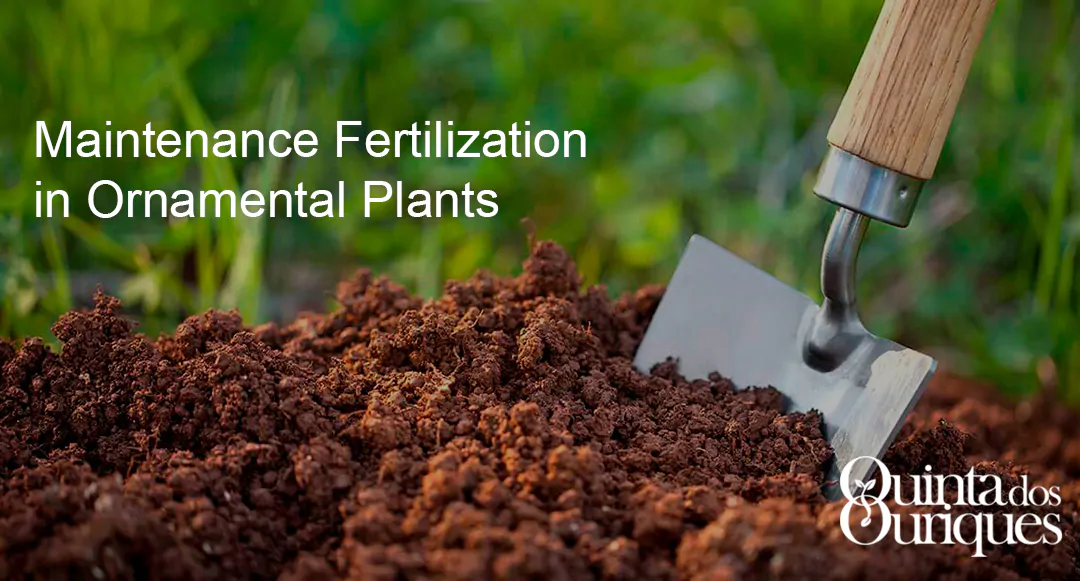
Over time, the initial fertilization, also called planting, is depleted because of its utilization and absorption by the roots of plants. For this reason, annual or maintenance fertilizers should be performed on each vegetable to replenish the nutrients essential for their survival.
Together with water and climate, it is the practice of fertilization that will determine the degree of development and / or productivity of the orchard or garden. Well done will also help to prevent or minimize damage from attack by pests and diseases.
Spring is the most recommended time for fertilization of these plants, as it is the period of their full development, due to increased temperature and rainfall.
Ideally, this fertilization should be based on the result of soil analysis and later recommendation by an agrarian technician (agronomist; forestry). This measure means that, in large areas, the cost of this professional and the analysis, which are not expensive, is rewarded basically for two reasons. The first of these is that capital is saved by purchasing optimal quantities of fertilizers, avoiding waste, as the professional will guide in this direction, thus obtaining the expected result, whether fruit production or in the force of the ornamentals. This purchase of fertilizers, which a lay person may come to do, is not just in larger quantities. Often, a lay person acquires the lower amount of fertilizer and, after putting it to the plants, does not observe the intended effect, causing a waste of time, as well as a loss of money already mentioned.
The second reason for the savings an industry professional can bring is far more visible. It is not uncommon for people to put too much fertilizer on their plants, which, depending on the case and the sensitivity of the species, can lead to death, causing significant damage to the orchard or garden. Excessive amounts of fertilizer may require unnecessary expense, lead to plant death, contaminate the region’s groundwater as excess fertilizer tends to seep into the soil and contaminate these underground water supplies, which are often used by other people through the wells.
Despite this explanation, the owner of a small orchard or ornamental tree may resort to general fertilization to maintain satisfactory development and without much risk of poisoning both the plants and the environment. This fertilization can be done in spring-summer, in number of three applications, giving a gap of 2 months between each application.
For ornamental or fruit trees planted in grassy areas, fertilization should be as follows:
1. The formulation NPK 10-8-6 is used;
2. Fertilization is made in holes 40 to 60 cm deep, which will be made by raising or removing part of the grass, when projecting the canopy into the soil;
3. One hole is used for each 2.5 cm trunk diameter (example: a 25 cm trunk tree will be fertilized through 10 holes around it);
4. 65 grams of formulation is used for each cm of trunk diameter up to a limit of 15 cm. Above this, 130 g is applied for each cm in diameter.
| Cookie | Duration | Description |
|---|---|---|
| cookielawinfo-checkbox-analytics | 11 months | This cookie is set by GDPR Cookie Consent plugin. The cookie is used to store the user consent for the cookies in the category "Analytics". |
| cookielawinfo-checkbox-functional | 11 months | The cookie is set by GDPR cookie consent to record the user consent for the cookies in the category "Functional". |
| cookielawinfo-checkbox-necessary | 11 months | This cookie is set by GDPR Cookie Consent plugin. The cookies is used to store the user consent for the cookies in the category "Necessary". |
| cookielawinfo-checkbox-others | 11 months | This cookie is set by GDPR Cookie Consent plugin. The cookie is used to store the user consent for the cookies in the category "Other. |
| cookielawinfo-checkbox-performance | 11 months | This cookie is set by GDPR Cookie Consent plugin. The cookie is used to store the user consent for the cookies in the category "Performance". |
| viewed_cookie_policy | 11 months | The cookie is set by the GDPR Cookie Consent plugin and is used to store whether or not user has consented to the use of cookies. It does not store any personal data. |